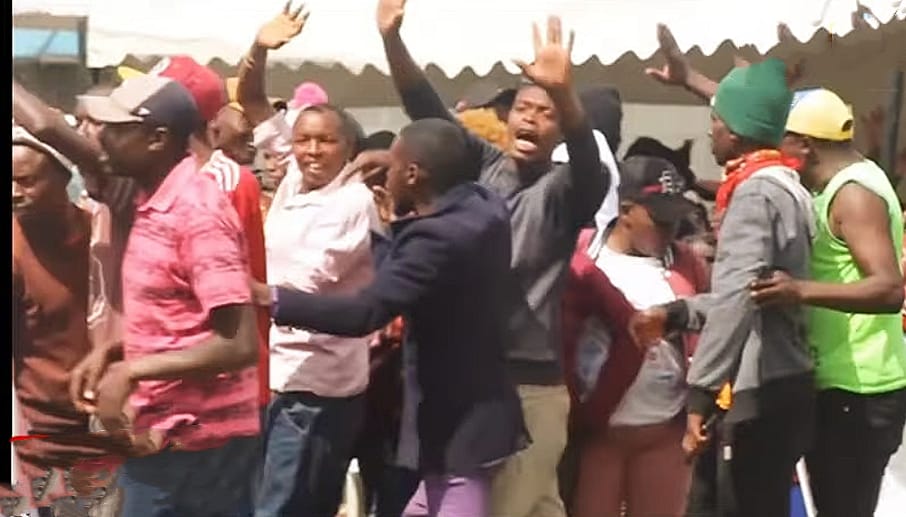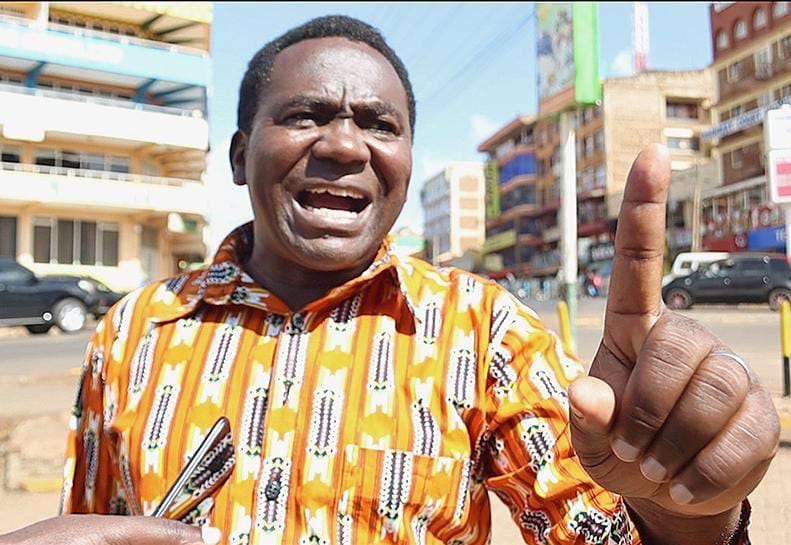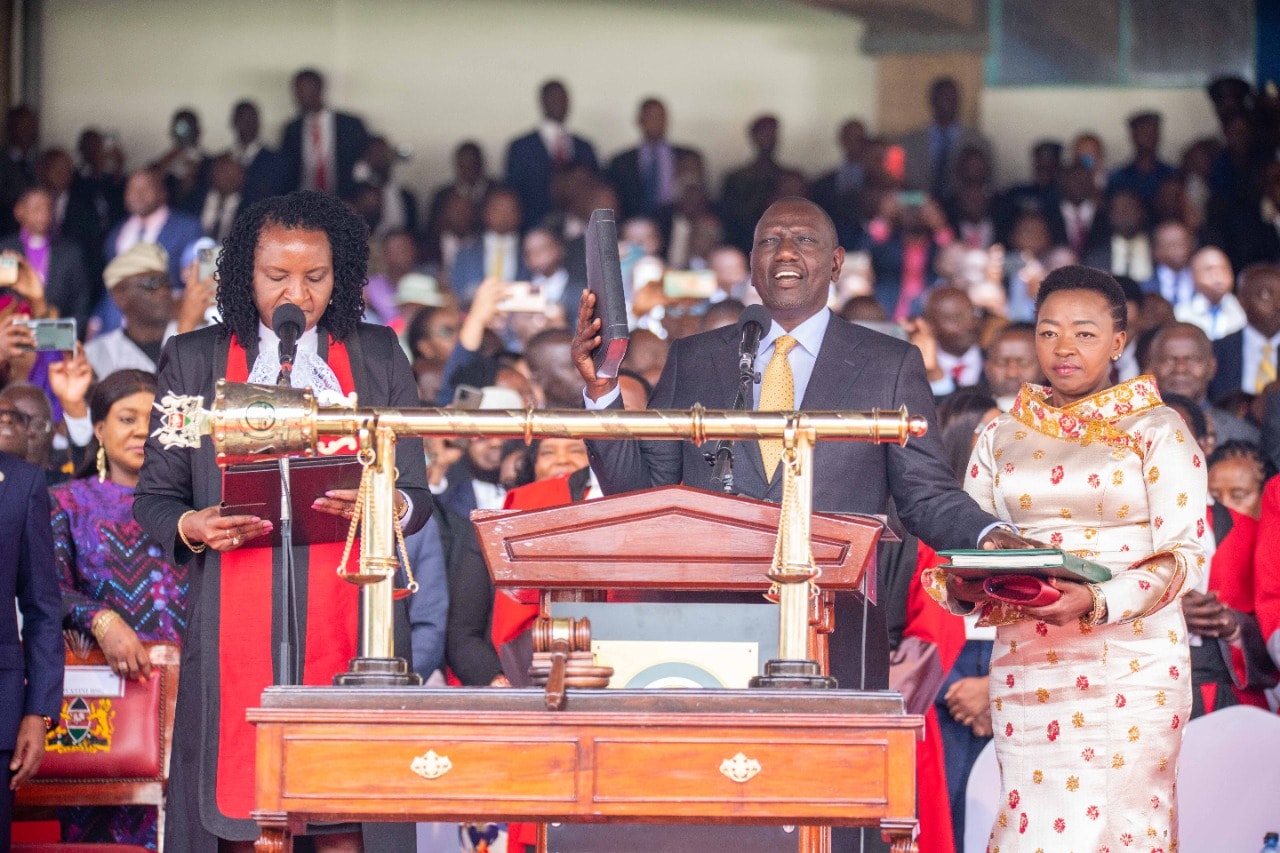BY RITA MUTHONI
President William Samoei Ruto’s administration finds itself at the center of increasing public dissatisfaction, marked by a blend of unmet promises, governance challenges, and growing dissent from key regions.
The unfulfilled promises of the Kenya Kwanza administration, coupled with controversial decisions and perceived authoritarianism, have set the stage for a highly charged political debate.
President Ruto’s 2022 campaign was built on the ambitious Kenya Kwanza Manifesto, with the Bottom-Up Economic Agenda promising to uplift the “hustler” class—small-scale traders, boda boda riders, and mama Mboga’s (market women).
However, nearly three years into his presidency, rising living costs, over-taxation, and allegations of corruption have eroded public trust.
A recent incident in Kanyuambora, Embu County, where mourners heckled Public Service Cabinet Secretary Justin Muturi as he attempted to read the President’s condolence message, underscores the growing public disillusionment.
Similar rejections in other counties indicate a broader dissatisfaction fueled by unmet expectations.
PUSH FOR ACCOUNTABILITY

Kenya’s youth, spearheaded by the Gen Z movement, has emerged as a critical force challenging the government.
Protests over the controversial Finance Bill 2024, which many viewed as oppressive, highlighted a growing generational discontent.
Demonstrations turned deadly, with youth storming Parliament and some losing their lives, underscoring the frustrations of a populace that feels sidelined.
The youth’s agitation forced President Ruto to dissolve his cabinet and include opposition members, to calm tensions.
However, this strategy sparked criticism that it weakened the opposition, leaving a vacuum in government oversight.
President Ruto’s decision to part ways with his Deputy President, Rigathi Gachagua, deepened fissures within the politically influential Mount Kenya region.
Gachagua’s impeachment for alleged corruption and undermining the presidency angered his supporters, who viewed him as a defender of farmers and a crusader against cartels in key agricultural sectors like tea, coffee, and milk.
The region remains divided despite replacing Gachagua with Abraham Kithure Kindiki, who enjoys significant support.
Analysts argue that the ouster has left an indelible mark on the Mountain, complicating Ruto’s efforts to regain trust in the area.
THE RISE OF MASS CRITICISM
The absence of strong opposition has left civil society, youth movements, and political analysts as the primary voices critiquing the government.
Analysts like Humphrey Njiru have drawn parallels between Ruto’s administration and previous regimes that centralized power, warning of a regression to autocratic tendencies.
Njiru highlights that Kenya’s return to a presidential system in 2013 has not been accompanied by the necessary checks and balances, with parliamentarians often serving the executive’s agenda instead of acting as independent overseers.
“Since 2013 when Kenya was returned to the presidential system of government, the legislative arm has not adapted to the system purely,” Njiru says.
He notes, “The problem is that the arms of government are often compromised by the executive. This is why Gen Zs took to the streets; they felt there was inadequate oversight to hold the government accountable.”
Forensic Kimutho, an opinion Leader says despite Gachagua’s replacement coming from the region, the mountain was angered by the humiliation of their own, in what they saw as a betrayal and a mind game being played at them.
“Kindiki was favored by the Mountain and widely preferred as Ruto’s running mate due to his popularity. However, the selection of Gachagua, who also enjoyed significant support, was accepted without resistance. But getting rid of Gachagua to replace with the initial selection has only created distrust,” Kimutho notes.
According to Kimutho, the Impeachment of Gachagua wasn’t felt lightly in the region and Ruto would find a hard time consolidating his lost support in the area.
“The people of the Mountain region have completely lost trust in Ruto and I don’t think he could recover it soon, ” Kimutho adds.
NEUTRALIZING THE STORMS
Even though the mountain looks shaky for Ruto, Kindiki’s influence has continued to neutralize the storms. 46 MPs from the Mount Kenya region and Nairobi have declared their support for Kindiki, which is expected to help Ruto regain popularism in the area.
Among the MPs come from Nairobi, Kiambu, Murang’a, Nyeri, Nyandarua, Nakuru, and Kirinyaga counties Mt. Kenya region encompasses counties such as Meru, Embu, Laikipia, Kirinyaga, Nyeri, and Tharaka Nithi.
REBUILDING TRUST

Kenya National Chambers of Commerce and Industries (KNCCI), Embu Chairman John Mugo Mate suggests that Ruto must urgently reevaluate his unfulfilled pledges and prioritize delivering tangible results to the Kenyan people.
“Between now and 2027, Kenyans expect progress—better roads, reliable water supply, and improved schools. It’s time for leaders to put aside divisive politics and focus on uniting the nation,” Mate notes.
The next three years will be critical in determining whether Ruto can bridge the growing trust deficit or the rising tide of public discontent will cement his administration’s legacy as one of broken promises and missed opportunities.
Send us your story via
news@arisemediagroup.co.ke or WhatsApp 0750456085
Book Advert-use above contacts
 404
404


